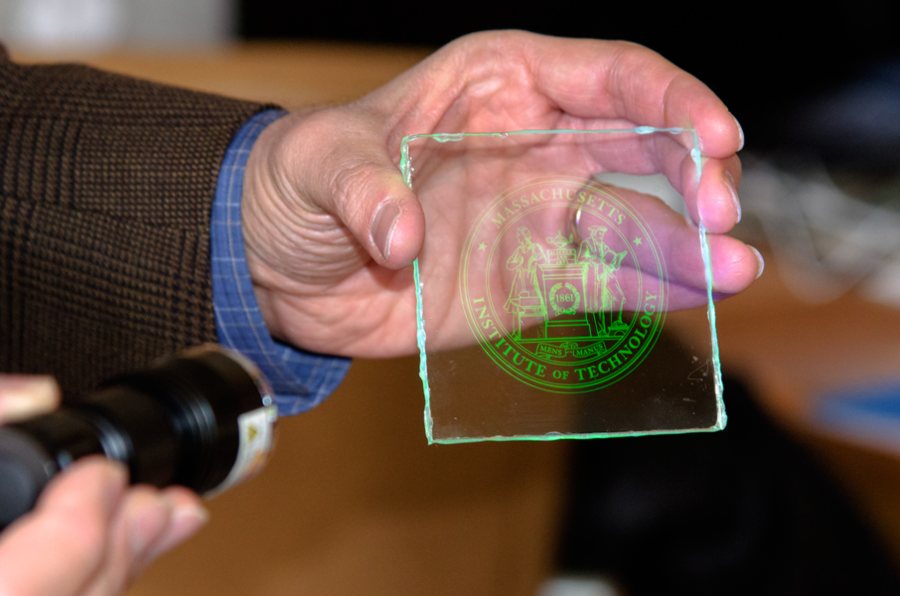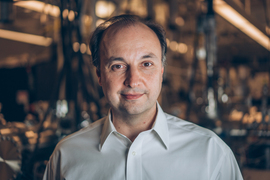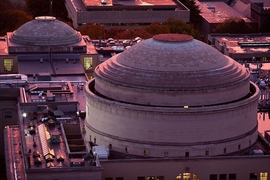MIT's Innovation Initiative hopes to improve the world by pushing forward the best of hundreds of ideas generated on campus through four pillars — education, research, outreach, and the planned Laboratory for Innovation Science and Policy.
While MIT has plenty of great science and technology ideas, without an advocate who can move those ideas beyond concept and prototype to market them, many will stay on the shelf. "For a technology to reach impact, someone needs to think about scale-up, and someone needs to think about how to bring the idea into the marketplace," says Vladimir Bulović, the Fariborz Maseeh Chair in Emerging Technology at MIT's School of Engineering, who also co-leads the MIT Innovation Initiative.
"To deliver impact with our ideas we need to go beyond a journal publication, beyond a talk that we give at conferences. We need to consider how to augment our student education so they can transform the world even more readily once they graduate," Bulović suggests.
Bringing experience to bear
A co-founder of multiple spinoffs, holder of more than 75 patents and award-winning educator, Bulović brings personal experience as an entrepreneur to the Innovation Initiative. His co-chair is Fiona Murray, the William Porter Professor of Entrepreneurship at the MIT Sloan School of Management. A preliminary report in December 2014 made specific recommendations for improving innovation impact, including creation of a Laboratory for Innovation Science and Policy. Former Massachusetts Governor Deval Patrick will become a visiting fellow with the MIT Innovation Initiative this spring.
"MIT Innovation Initiative will bring forward additional venues that can accelerate transition of ideas to innovations and impact," Bulović says. "As scientists, social scientists and engineers, MIT trains us extremely well to be able to develop a new type of technology, apply the science principles on hard problems, and discover entirely new paradigms of what scientific pursuit might mean, and we're very comfortable writing that in the form of a paper, a book, or a presentation at a conference. Transforming those academic successes into an impactful entity beyond MIT is a very large step," he explains.
The Innovation Initiative will prepare the next generation — undergrads, graduate students, and postdocs alike — to take that step by instituting a new certificate program, coordinating the work of existing entrepreneurial support entities on campus, and launching the new Lab for Innovation Science and Policy.
Social and market context
The new lab will study the social and market context of taking ideas from lab demonstration to practical, large-scale application in the world. It will conduct research on venture formation, scale up, and understanding the marketplace as well as social needs and responses to them. "Is it by forming a for-profit company? A not-for-profit entity? Making sure your idea can be embedded in an existing company and allowing you to be a member of a team who will push it forward? Study of such social and market context is an untapped area of research opportunities," Bulović says.
A cross-disciplinary approach is needed to transform research scientists' findings in the lab into solutions that meet real-world needs. "Illuminate your idea from one angle, the science angle, or take a different point of view and illuminate it from a social perspective, quantify its impact. Every one of those new looks will complete the picture of its value to the world," Bulović says.
A legacy of entrepreneurship
These steps build on a foundation of successes of MIT alumni and faculty entrepreneurs and innovators. In the Dec. 8, 2014, community meeting, Bulović and Murray reported some initial findings of the 2014 survey of MIT alumni, in which over one-third reported they are entrepreneurs; 35 percent are inventors; and 32 percent are patent holders. The survey compiled 19,700 responses from 104,000 alumni, about 19 percent participation.
"Very satisfyingly, about 30 percent of MIT-alum companies have headquartered in Massachusetts, and about 8 [percent] in Cambridge, just outside MIT," Bulović says.
Alternatives for PhDs and postdocs
Although MIT is well-known for sending many of its doctoral graduates and postdoctoral associates on to teaching careers, there is a huge mismatch between the number of qualified candidates and openings for college faculty. As an example, MIT has about 1,400 postdoctoral associates but on average fills only about 30 academic positions a year. "The scale of the mismatch suggests that many of the postdocs will not find academic positions they might desire. Those who are entrepreneurially-inclined might want to consider ways of enhancing their innovation and entrepreneurship skills while still at MIT," Bulović suggests.
The Innovation Initiative supports programs that could give many of them the skills to pursue entrepreneurial careers as an alternative. One such program initiated by the Research Lab of Electronics and led by Professor Yoel Fink is the Translational Fellows Program, which gives postdocs one day a week, or 20 percent of their time, to work on commercializing a technology developed at MIT. It is now in its second year. "We are looking at ways of enabling some of the most skilled practitioners we have on campus to align their thinking and actions towards the idea of generating themselves a job before they step out of MIT," says Bulović.











